In the ancient Chinese costume system, Hanfu sash and belt ornaments played a very important role, not only as a means of securing and decorating the garment, but also as a symbol of the wearer's status.
In ancient times, officials wore Chaofu (朝服) when going to Shangchao (上朝). The Chaofu was the ancient official's uniform for political discussions, one of the important functions of Chaofu in ancient China was to distinguish between the ranks of superior and inferior through clothing. This distinction was mainly made through the three aspects of the Guan (冠, headwear), the color/Zhangwen (章纹) of the garment, and the belt ornaments.
The belt ornaments on Chaofu, specifically the belt and the various types of pendant hanging from it, are mainly of the following types: jade pendants, Bixi (蔽膝), Yinshou (印绶), and Yufu/Yudai (鱼符/鱼袋).
In ancient Chinese Chaofu, belt ornaments were a very important part, especially for men, as they were almost the only ornaments they wore and were important identity markers. The role of the belt ornament in expressing the wearer's rank was clearly and straightforwardly defined in the costume system during the Zhou dynasty, and was later enriched and refined through the ages.
Hanfu Belt for Ancient Officials
There are usually two types of Hanfu sash/belt for Chaofu, the Dadai, made of cloth and silk, and the Gedai, made of leather. Both types of sash have their own purpose: the Dadai is used for girding the waist. And most of the waist ornaments attached to Gedai.
Dadai
Dadai (大带, dà dài) is an ancient type of Hanfu sash made of cloth and silk, which is made into a strip and tied around the waist when in use. From emperors to officials, the Dadai needed to worn during Zaochao. The system of Dadai originated very early, during the Shang and Zhou Dynasties. From the historical records, the hierarchy of the early Dadai was very distinctive, with customized sizes, colors, materials, and decorations, depending on the status of the wearer.
The Dadai is tied from the back to the front, knotting at the waist and ending with the excess portion of the belt hanging down, and the excess portion was known in ancient times as the "Shen (绅)", so Dadai hence the name "Shendai (绅带)". The length of the Shen is an important marker of status, and the higher the status, the longer the Shen. Generally, officials carried a long, narrow tablet made of jade, ivory, or bamboo, called a 'Hu (笏)', in order to write their notes. Hold it in hand when reporting and insert it into Dadai when not in use.
Gedai
Gedai (革带, gé dài), a kind of Hanfu belt made of leather. Its development broadly went through three stages:
- The first stage is called Pandai (鞶带) and is tied with a Daigou (带钩, belt hook).
- By the time of the Spring-Autumn and Warring States periods, the influence of the western region clothing styles led to belt head gradual shift to DaiJue (带鐍, a kind of integrated buckle).
- By the Wei and Jin dynasties, the Daigou had largely receded from history, and Gouluo Dai (钩络带) were popular, which could be tied with a DaiJue, as well as with a variety of metal belt ornaments on the belt body.
And Gouluo Dai also gave rise to two branches:
- One is to put small rings on the belt ornaments, and hang kinds of miscellaneous things on the rings, called the Diexie Dai (蹀躞带), which is mostly used by ethnic minorities and military officials.
- Another one called the Hutou Dai (笏头带), was used mainly by the Han Chinese and was decorated according to the grade of the belt, which was used from the Northern and Southern Dynasties until the Ming Dynasty.
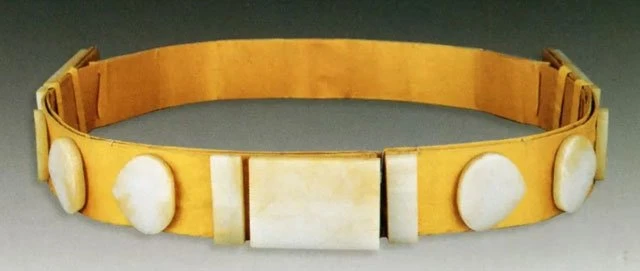
jade Daikua Gedai
The above kinds of leather belts. The longest-running is Hutou Dai, and began to have a clear function of rank identification in the Tang Dynasty. Hutou Dai has a complex form, mainly consisting of Daiting (带鞓), Daikua (带銙), Daikou, and Daiwei (带尾).
- Daiting is the main body of the belt, which is the foundation of the Hutou Dai, and any kind of decoration must be attached to Daiting. After the Tang Dynasty, the appearance of the Daiting was mostly wrapped in colored cloth.
- Daikua is sheets of ornamentation pinned to the Daiting, the texture and quantity of which are important indicators of grade.
- Daikou can be understood as buckle, and is usually made of metal, with varying degrees of sophistication.
- Daiwei used to protect the ends of the belt and to beautify the overall appearance.
The regulations on Gedai varied from period to period in ancient China, with the part related to the rank of the official being mainly in the quality and material of the Daikua, the jade Daikua was the highest rank, and the gold Daikua was second only to the jade belt.
Jade Pendant Sets
In ancient China, jade was the most common item of jewelry worn on the Gedai. As the saying goes, "A gentleman has no reason to go without jade (君子无故玉不去身)", the concept of jade was already deeply rooted in people's hearts during the Qin Dynasty.
The jade pendant (Jinbu, 禁步), which consisted of Huang (璜), Jue (玦), Guan (管), Zhu (珠), etc., became a symbol or sign of noble status as it had both the nature of a jade pendant and an eye-catching decorative function, and as its structure became more complicated and institutionalized. Its origin is ancient, passed down through the generations, although there are times of rising and fall, it has been extended to the Ming Dynasty.
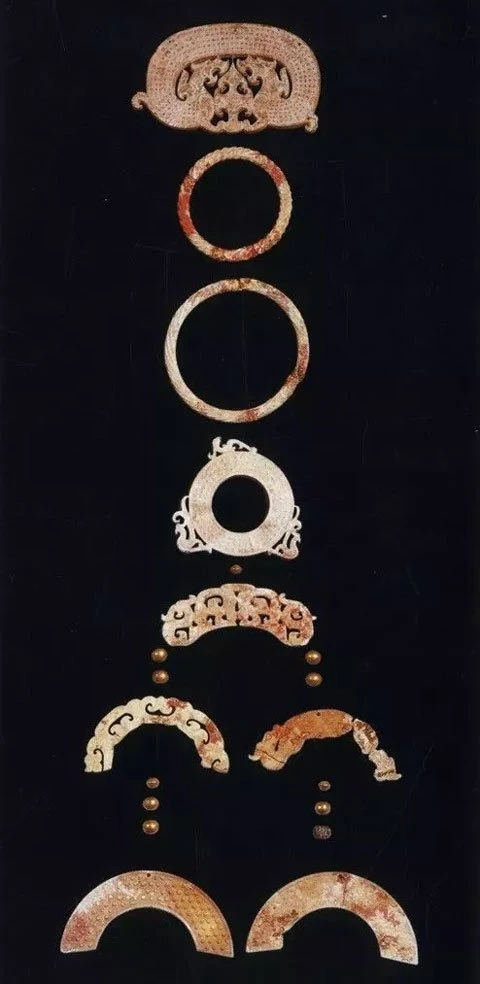
Jade pendant sets are distinguished by differences in material, group of ribbons, and complexity to indicate rank distinctions. The color of the jade and ribbon was different for different levels of status, making it easy to understand at a glance. Moreover, the higher the status, the more complex and long the jade pendant set is; the lower the status, the simpler and shorter the jade pendant.
Wearing Bixi
Bixi (蔽膝), an ax-shaped belt ornament hanging in the center of the front of the lower garment, is located in front of the knee, also called "Bi (韠)". When the form of the Yichang was completed, the Bixi was preserved to commemorate this early style of clothing. In the pre-Qin period, emperors put them on their Mianfu (冕服, the formal dress is worn by the emperor in ancient times for major ceremonies) to increase their majesty as well as to commemorate the ancient system of dress.
Bixi, an item of ornament, was first made of mature cowhide but later replaced by silk. The shape, color, and pattern of the Bixi, which varied according to rank, were a sign of status. According to literature, the basic shape of the Bixi is roughly broad at the bottom and narrow at the top. The color of the Emperor's Bixi was vermillion, the ministers were plain, and the low ranking officials were light black. During the Zhou dynasty, there were three types of pattern on the Bixi, namely, mountain, fire, and dragon: the emperor could use all three; the vassal used fire and mountain; the ministers used the mountain.
During the Zhou Dynasty, when rituals were well established, the system of wearing Bixi was strictly used. However, during the Warring States period, it was once abolished because it was considered cumbersome in battle. It was not until the Sui and Tang dynasties, when the system of Mianfu for emperors was restored, that the Bixi was restored again. After the Song dynasty, they were more steadily called "Bixi" and were made of various fabrics. The color of the Bixi was mostly the same as that of the lower Chang. The Bixi of the Ming dynasty Mianfu was decorated with Wenzhang, while the Bixi of the Chaofu was not.
Yinshou
"Shou (绶)" is a long ribbon woven with colored silk and tied around the waist. Originally, it was used as a ribbon to link jade pendants, but later it evolved into a symbol used to identify the rank of officials on Jifu (formal dress worn on sacrificial rites) and Chaofu, and hung on Gedai to distinguish different ranks by color and length. During the Western Zhou Dynasty, Shou was hung behind the waist, hence the term "front Bixi and back Shou".
After the Qin and Han Dynasties, the system of wearing Shou became more and more strict. In addition to being an important ornament on the emperor's Mianfu, during the Han Dynasty, it was often worn with the official seal, also known as "Yinshou". In addition to color and length, there were also rules about the thickness of the Shou; the higher the rank, the longer the Shou, the more colors used, and the higher the density.
The width of the Shou is uniform, all being about 23 cm. But the Shou's length, however, varies considerably. According to the above, the higher the status of the official, the longer the Shou that is worn, the longest is about 7 meters, the shortest is also about 2.8 meters, when wearing such a long Shou, it is often necessary to make it into a loop, tucked under the belt, the excess part of the natural sagging, the higher the status, the more loops. Therefore, from the color, density, length, and texture of the official seal of the Shou, it is easy to judge one's rank.
By the Sui dynasty, the Yinshou system had developed into a double Shou, with large double Shou and small double Shou. The width of the Shou was no longer uniform, also decorated with jade rings during the weaving process. By the Tang Dynasty, Shou was usually tied directly under the belt and not associated with the official seal, indicating that the Shou had evolved to a purely decorative item.
Yufu / Yudai
There are many ways to indicate rank status on the Chaofu by means of ornaments. In the Sui Dynasty, the jade pendant was replaced by the Yufu (鱼符, fish talisman). The Yufu, which was engraved with identity information, was a development and innovation in the management system for officials, and was more of an identity marker than the jade pendant or Yinshou.
Yufu, a fish-shaped talisman issued by the imperial court, is a symbol of identity and status for officials, as well as a passport for officials to enter and leave the palace. It is shaped like a fish, divided into left and right halves by a flat cut at the fins, and engraved with the title and name of the bearer. A round hole was drilled in the mouth of the fish, which was used to tie the string to the Gedai.
In addition to the Yufu, there was also Yudai (鱼袋, fish-bag) in the Tang Dynasty. The so-called Yudai was the bag that held the Yufu. The Yudai was an honor bestowed by the emperor on officials, and was only given to those of the fifth rank and above.
The Tang system continued to be used in the Song Dynasty, but the Yufu was no longer used, and only a Yudai was worn. Yudai could not only become a kind of decoration to show the status and rank, but also could hold some small things, combining functionality, decoration, and practicality.
In the Ming dynasty, the Yudai system was abandoned, and instead, the waist plate system was replaced. To the Qing Dynasty, the information on the waist plate has reached the degree of everything, not only indicates the access range, and the user's name, age, facial features are all system on the waist plate. Quite similar to the present day pass and identity card.
The above is about Hanfu sash and belt ornament in ancient times. More about Chinese traditional costume history can be found here.
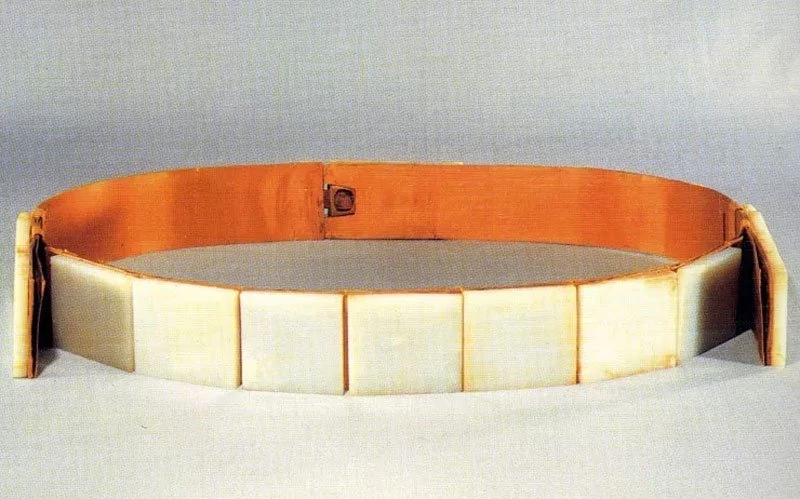

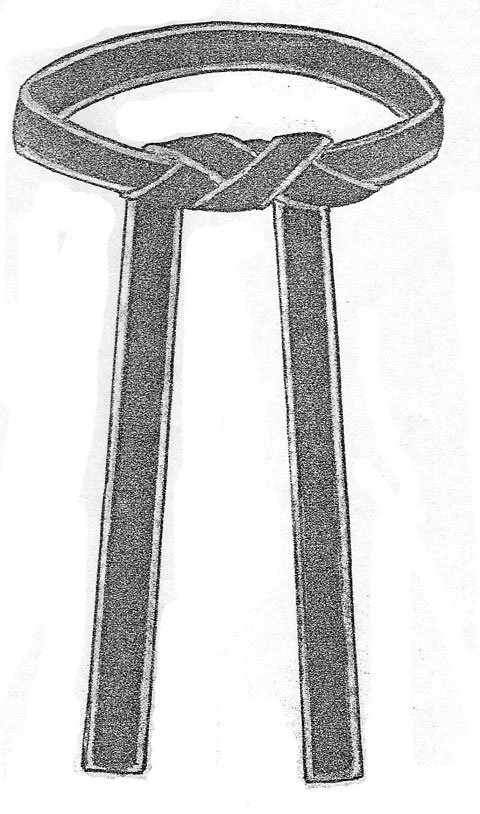
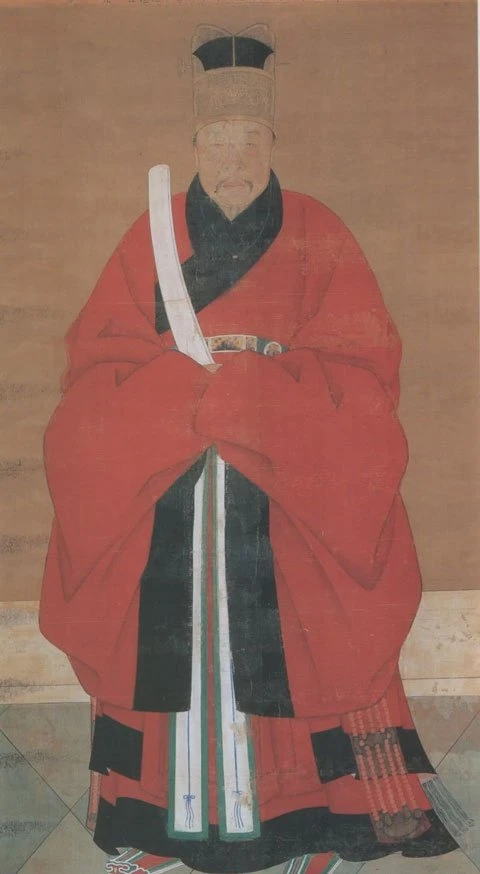
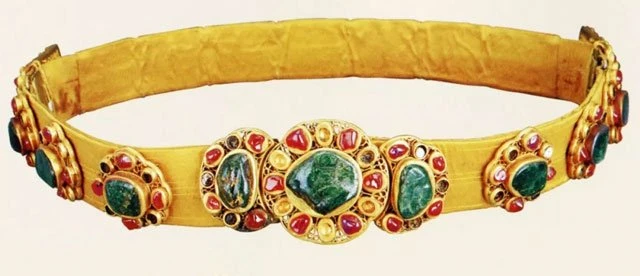
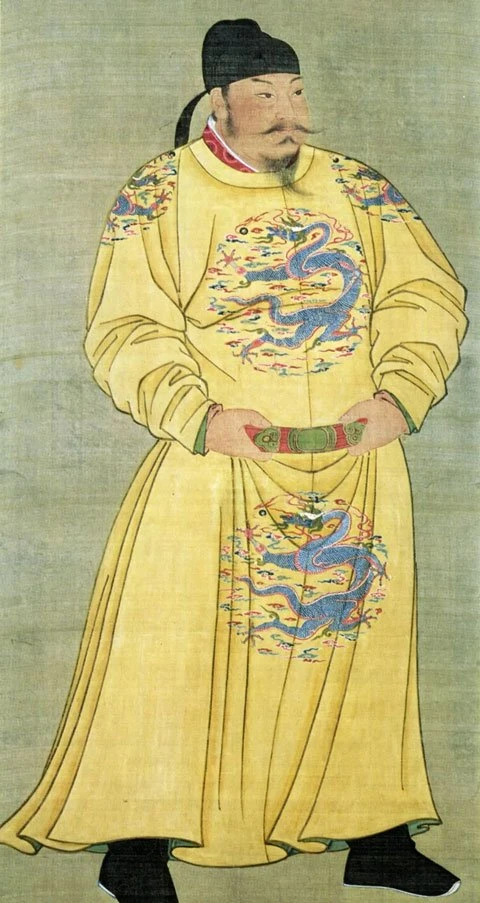

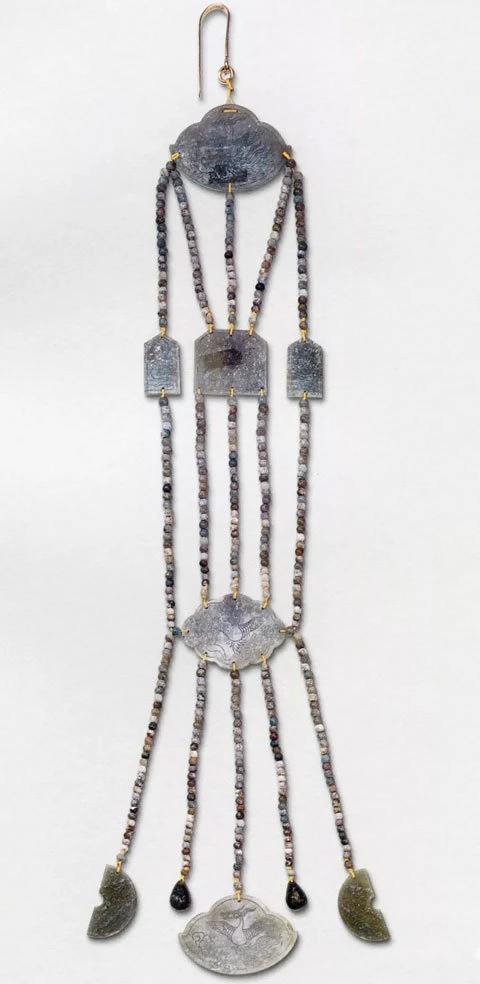

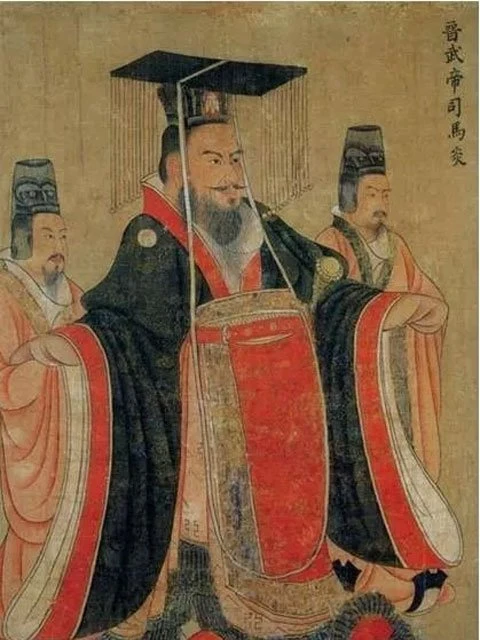
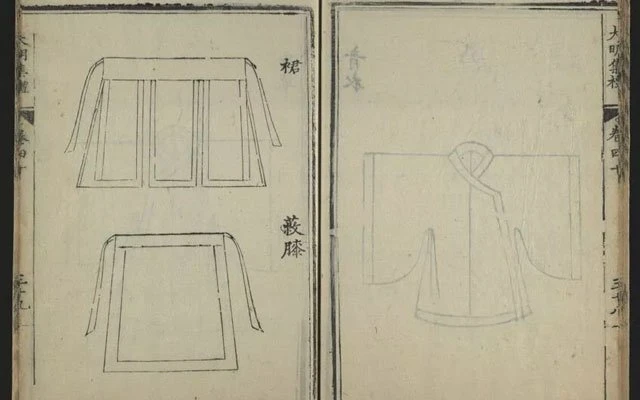

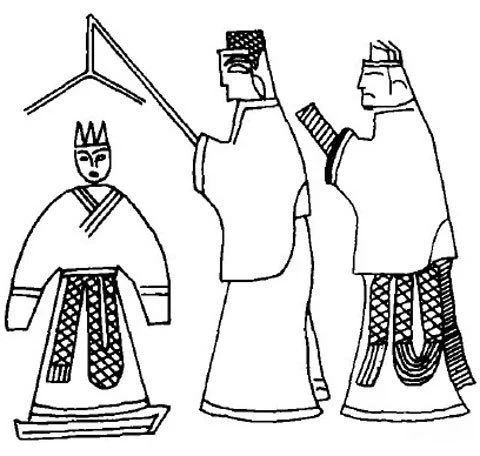
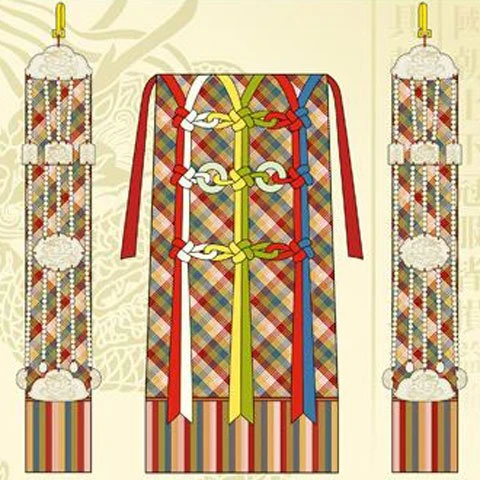

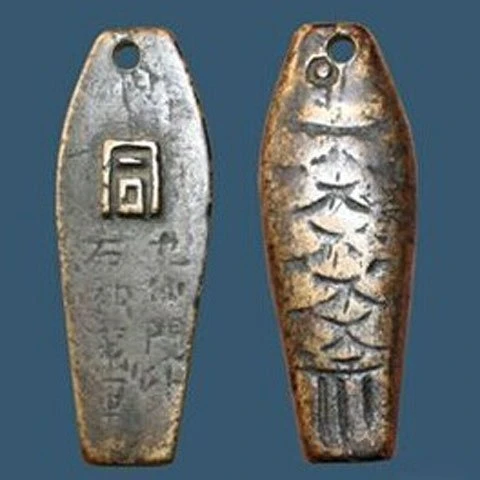
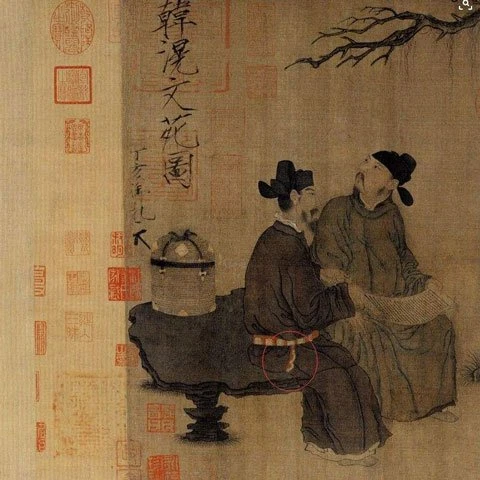

I am sorry, the English general word for "belt" is "belt", not "sash". "Sash' is a specific word referring to textile belts. You can't say "There are usually two types of Hanfu sash - the Dadai, made of cloth, and the Gedai, made of leather" because gedai is the opposite of sash, it is of leather.
Thanks for your feedback!
So many styles omg, this looks fun to accessorize lol
Learnt a lot about Bixi. Thanks!